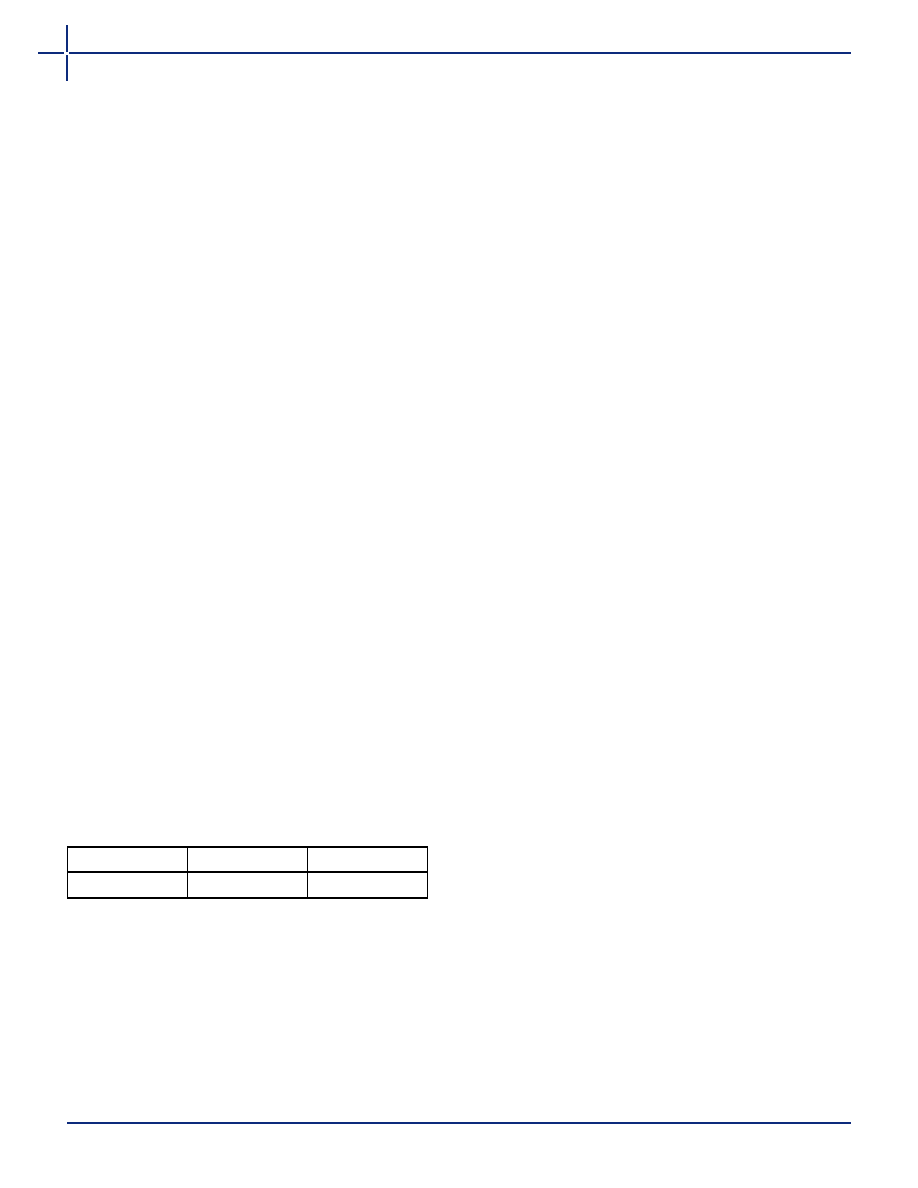- 您現(xiàn)在的位置:買賣IC網(wǎng) > PDF目錄4445 > A54SX08-TQ176I (Microsemi SoC)IC FPGA SX 12K GATES 176-TQFP PDF資料下載
參數(shù)資料
| 型號: | A54SX08-TQ176I |
| 廠商: | Microsemi SoC |
| 文件頁數(shù): | 13/64頁 |
| 文件大?。?/td> | 0K |
| 描述: | IC FPGA SX 12K GATES 176-TQFP |
| 標(biāo)準(zhǔn)包裝: | 40 |
| 系列: | SX |
| LAB/CLB數(shù): | 768 |
| 輸入/輸出數(shù): | 128 |
| 門數(shù): | 12000 |
| 電源電壓: | 3 V ~ 3.6 V,4.75 V ~ 5.25 V |
| 安裝類型: | 表面貼裝 |
| 工作溫度: | -40°C ~ 85°C |
| 封裝/外殼: | 176-LQFP |
| 供應(yīng)商設(shè)備封裝: | 176-TQFP(24x24) |
第1頁第2頁第3頁第4頁第5頁第6頁第7頁第8頁第9頁第10頁第11頁第12頁當(dāng)前第13頁第14頁第15頁第16頁第17頁第18頁第19頁第20頁第21頁第22頁第23頁第24頁第25頁第26頁第27頁第28頁第29頁第30頁第31頁第32頁第33頁第34頁第35頁第36頁第37頁第38頁第39頁第40頁第41頁第42頁第43頁第44頁第45頁第46頁第47頁第48頁第49頁第50頁第51頁第52頁第53頁第54頁第55頁第56頁第57頁第58頁第59頁第60頁第61頁第62頁第63頁第64頁

SX Family FPGAs
1- 16
v3.2
Evaluating Power in SX Devices
A critical element of system reliability is the ability of
electronic devices to safely dissipate the heat generated
during operation. The thermal characteristics of a circuit
depend on the device and package used, the operating
temperature, the operating current, and the system's
ability to dissipate heat.
You should complete a power evaluation early in the
design process to help identify potential heat-related
problems in the system and to prevent the system from
exceeding the device’s maximum allowed junction
temperature.
The actual power dissipated by most applications is
significantly lower than the power the package can
dissipate.
However,
a
analysis
should
be
performed for all projects. To perform a power
evaluation, follow these steps:
1. Estimate
the
power
consumption
of
the
application.
2. Calculate the maximum power allowed for the
device and package.
3. Compare the estimated power and maximum
power values.
Estimating Power Consumption
The total power dissipation for the SX family is the sum
of the DC power dissipation and the AC power
dissipation. Use EQ 1-5 to calculate the estimated power
consumption of your application.
PTotal = PDC + PAC
EQ 1-5
DC Power Dissipation
The power due to standby current is typically a small
component of the overall power. The Standby power is
shown
in
for
commercial,
worst-case
conditions (70
°C).
The DC power dissipation is defined in EQ 1-6.
PDC = (Istandby) × VCCA + (Istandby) × VCCR +
(Istandby) × VCCI + xVOL × IOL + y(VCCI – VOH) × VOH
EQ 1-6
AC Power Dissipation
The power dissipation of the SX Family is usually
dominated by the dynamic power dissipation. Dynamic
power dissipation is a function of frequency, equivalent
capacitance, and power supply voltage. The AC power
PAC = PModule + PRCLKA Net + PRCLKB Net + PHCLK Net +
POutput Buffer + PInput Buffer
EQ 1-7
PAC = VCCA
2 × [(m × C
EQM × fm)Module +
(n × CEQI × fn)Input Buffer+ (p × (CEQO + CL) × fp)Output Buffer +
(0.5 × (q1 × CEQCR × fq1) + (r1 × fq1))RCLKA +
(0.5 × (q2 × CEQCR × fq2)+ (r2 × fq2))RCLKB +
(0.5 × (s1 × CEQHV × fs1) + (CEQHF × fs1))HCLK]
EQ 1-8
Definition of Terms Used in Formula
m
=
Number of logic modules switching at fm
n
=
Number of input buffers switching at fn
p
=
Number of output buffers switching at fp
q1
=
Number of clock loads on the first routed array
clock
q2
=
Number of clock loads on the second routed array
clock
x
=
Number of I/Os at logic low
y
=
Number of I/Os at logic high
r1
=
Fixed capacitance due to first routed array clock
r2
=
Fixed capacitance due to second routed array
clock
s1
=
Number of clock loads on the dedicated array
clock
CEQM = Equivalent capacitance of logic modules in pF
CEQI
=
Equivalent capacitance of input buffers in pF
CEQO = Equivalent capacitance of output buffers in pF
CEQCR = Equivalent capacitance of routed array clock in pF
CEQHV = Variable capacitance of dedicated array clock
CEQHF = Fixed capacitance of dedicated array clock
CL
=
Output lead capacitance in pF
fm
=
Average logic module switching rate in MHz
fn
=
Average input buffer switching rate in MHz
fp
=
Average output buffer switching rate in MHz
fq1
=
Average first routed array clock rate in MHz
fq2
=
Average second routed array clock rate in MHz
fs1
=
Average dedicated array clock rate in MHz
Table 1-12 Standby Power
ICC
VCC
Power
4 mA
3.6 V
14.4 mW
相關(guān)PDF資料 |
PDF描述 |
|---|---|
| CAT24C32WI-GT3 | IC EEPROM 32KBIT 400KHZ 8SOIC |
| A54SX08-TQG176I | IC FPGA SX 12K GATES 176-TQFP |
| A54SX08-1TQG176 | IC FPGA SX 12K GATES 176-TQFP |
| AMM22DTMH | CONN EDGECARD 44POS R/A .156 SLD |
| EP4CGX30CF23C7 | IC CYCLONE IV GX FPGA 30K 484FBG |
相關(guān)代理商/技術(shù)參數(shù) |
參數(shù)描述 |
|---|---|
| A54SX08-TQ176M | 制造商:未知廠家 制造商全稱:未知廠家 功能描述:Field Programmable Gate Array (FPGA) |
| A54SX08-TQ208 | 制造商:未知廠家 制造商全稱:未知廠家 功能描述:54SX Family FPGAs |
| A54SX08-TQ208I | 制造商:未知廠家 制造商全稱:未知廠家 功能描述:54SX Family FPGAs |
| A54SX08-TQ208M | 制造商:未知廠家 制造商全稱:未知廠家 功能描述:54SX Family FPGAs |
| A54SX08-TQ208PP | 制造商:未知廠家 制造商全稱:未知廠家 功能描述:54SX Family FPGAs |
發(fā)布緊急采購,3分鐘左右您將得到回復(fù)。